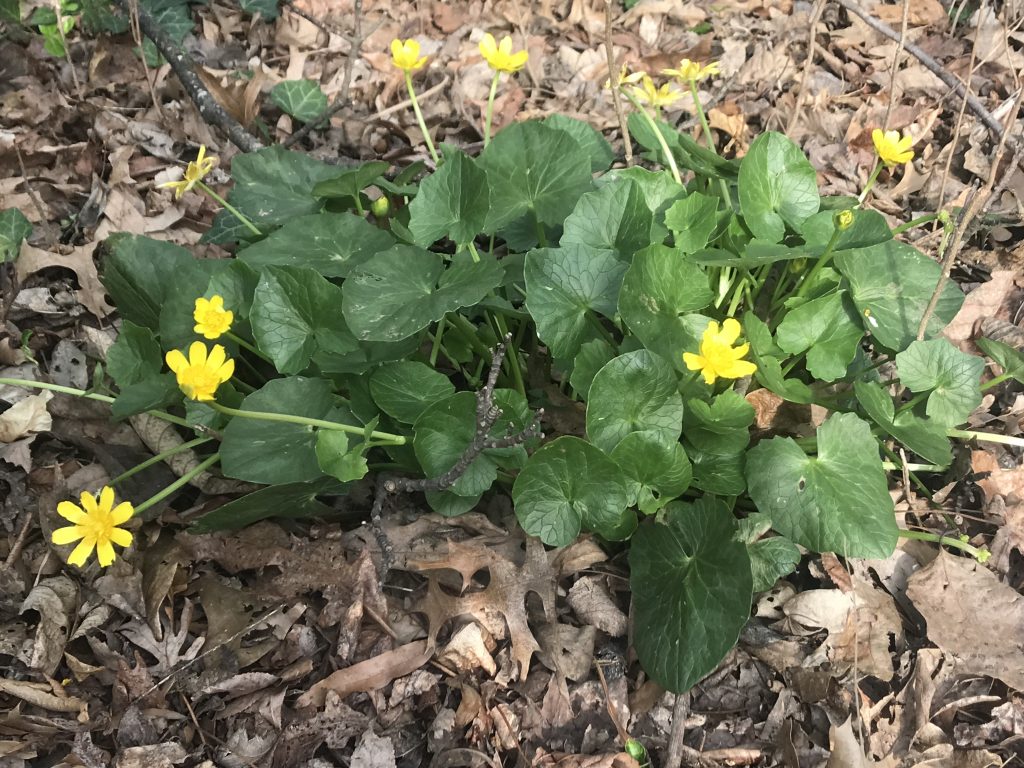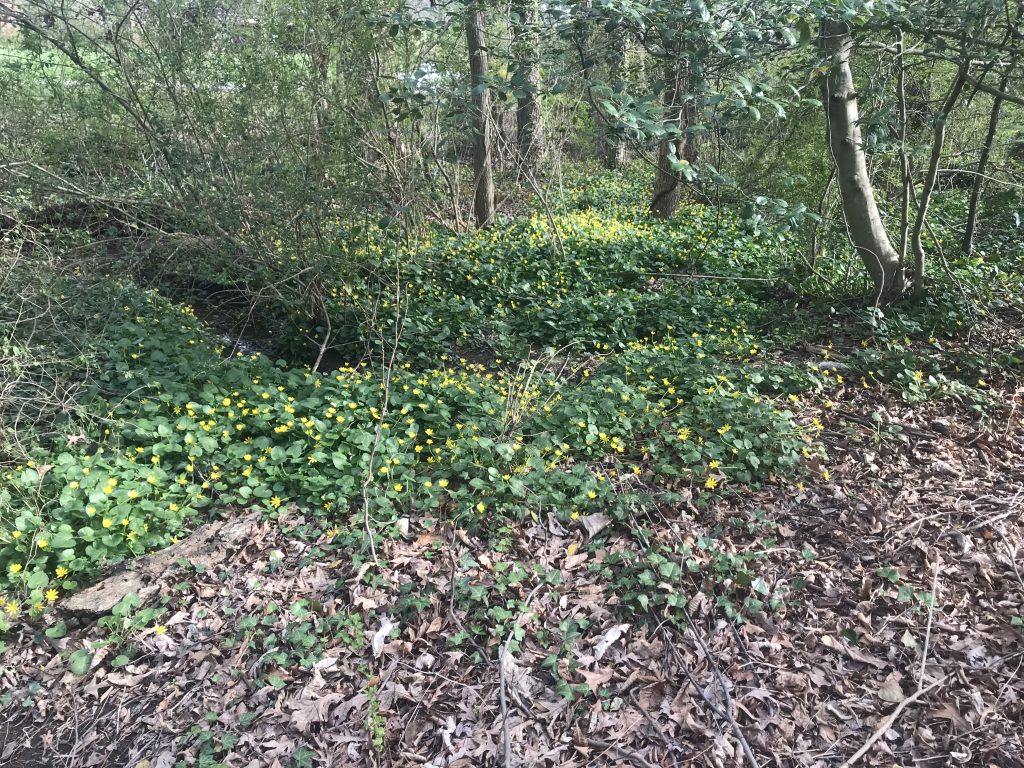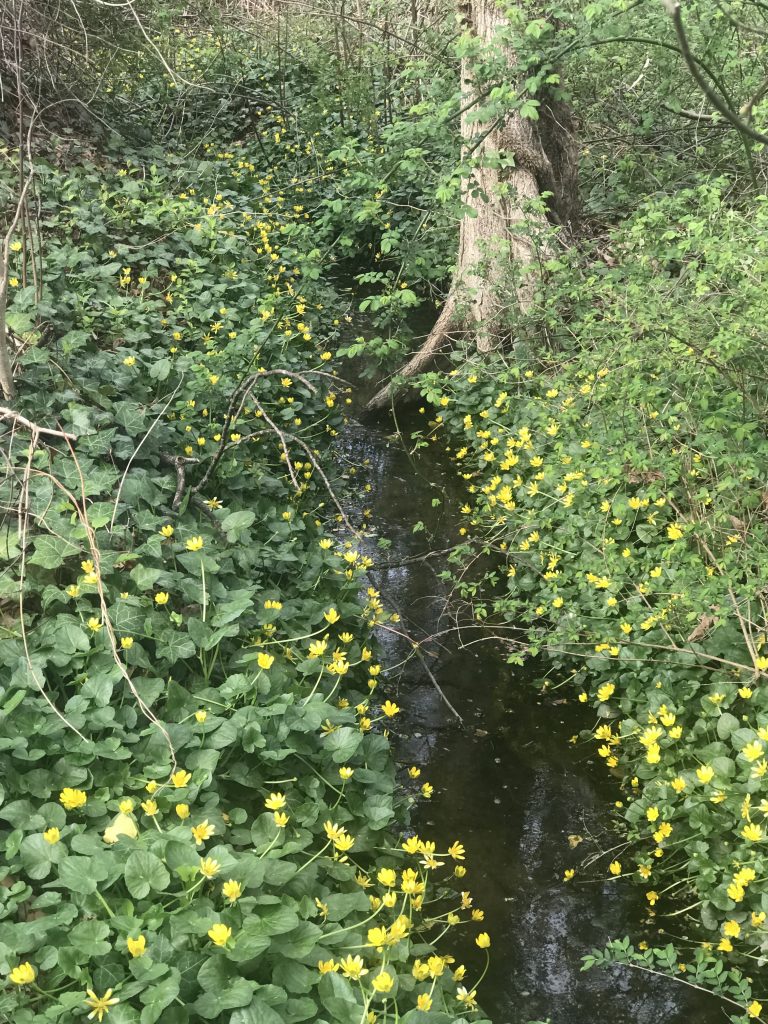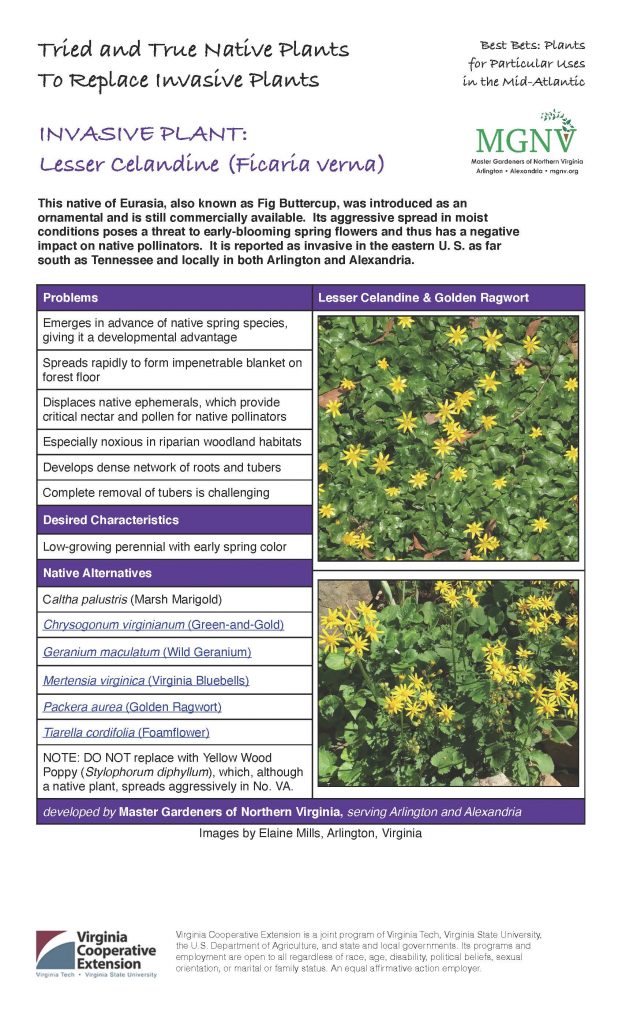Lesser celandine or fig buttercup (Ficaria verna) is now becoming noticed in Henrico County as the plants are beginning to come into bloom.

Lesser celandine is a non-native, highly invasive weed that belongs to the buttercup family (Ranunculaceae). This herbaceous, perennial plant is native to Europe, northern Africa, western Asia, and Siberia. It was introduced in North America as an ornamental plant. It is currently found in twenty-two states (including Virginia) and the District of Columbia primarily in the Northeast and Pacific Northwest, indicated by the blue shaded states on the map below from the USDA.

Plants have a basal rosette of dark green, shiny, stalked leaves. The flowers open in March and April, and have butter-yellow petals. When in bloom, large infestations of lesser celandine appear as a green carpet with yellow dots, spreading across the forest floor.
Habitat and Ecological Impacts: Lesser celandine occurs in moist, forested floodplains and in some drier upland areas, and seems to prefer sandy soils. This vigorous growing groundcover forms large, dense patches on the forest floor, displacing and preventing native plants from co-occurring. The ecological impact of lesser celandine is primarily on the native spring-flowering plant community and the various wildlife species associated with them.

This work is licensed under a Creative Commons Attribution-ShareAlike 3.0 Unported License.
Control and Management: Lesser celandine is very difficult to control but it can be managed with persistence over time. For small infestations, lesser celandine may be pulled up by hand or dug up using a hand trowel or shovel. It is very important to remove all bulblets and tubers. For larger infestations, chemical control may be necessary to avoid soil disturbance in a large area. The use of a systemic herbicide is recommended to kill the entire plant from tip to the root. Since the plant is often growing with other desirable plants or grass, care should be taken not to injure off-target plants. Herbicide applications are most effective prior to more than plant being at 50% flower. The site should be monitored and retreated in subsequent years, as needed, to control this invasive weed.
When using herbicides, always read and follow label directions for rates, spraying conditions, and personal protective equipment. Do not spray when it is windy or raining, or when rain is forecasted. NEVER apply herbicides to standing water unless the herbicide is distinctly labeled for aquatic use. Remember, it is the herbicide applicators responsibility to apply the product in accordance to the instructions on the label. Please contact the Henrico Extension office for current chemical recommendations.

This work is licensed under a Creative Commons Attribution-ShareAlike 3.0 Unported License.
The Master Gardeners of Northern Virginia have created this fact sheet (below) with some Virginia native alternatives (most of which are also native to Henrico) for this low-growing perennial with early spring color.

